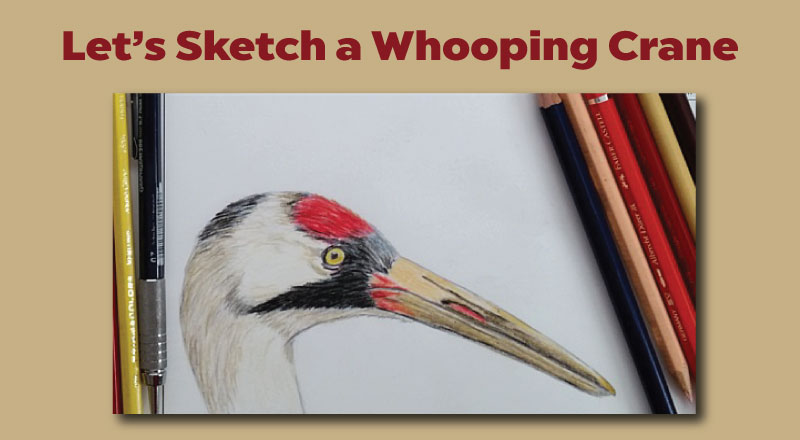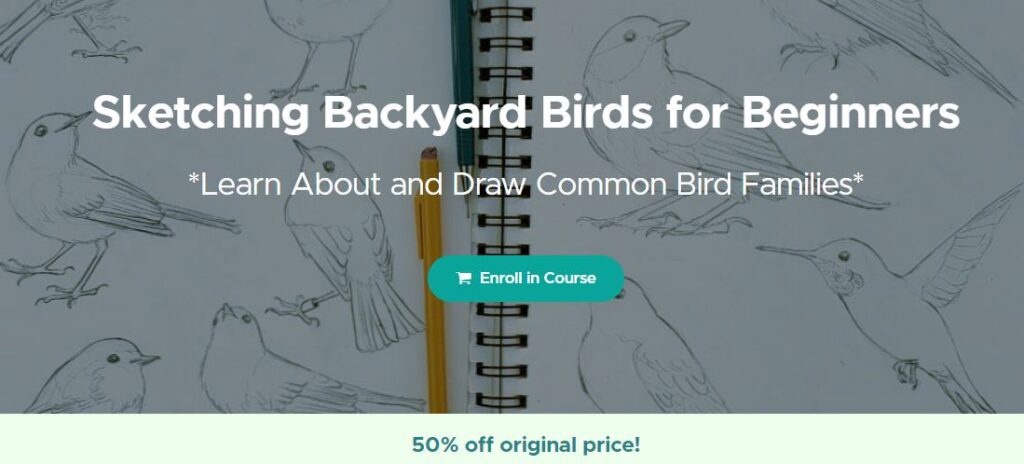CLICK HERE TO DOWNLOAD CRANE IMAGE FOR SKETCHING EVENT
Join me today MAY 17TH for live events on Facebook (noon PDT) and Instagram (2pm PDT) in celebration of Endangered Species Day. Gather pencils, paper, and CLICK HERE to download the image I’ll be using in the demonstration.
Facts About Whooping Crane
Whooping Cranes are celebrated on Whooping Crane day each year on May 28th. Below you can learn some cool facts about these endangered North American birds.
- The Whooping Crane; Grus americana, of North America is among the rarest birds in the world.
- These majestic birds nearly went extinct in the early 1900’s due to hunting and habitat loss.
- Back in 1973, when the Endangered Species Act was passed, fewer than 50 Whooping Cranes existed in the wild.
- Adult Whooping Cranes are the tallest birds in North America and are identified by a red skin patch on their forehead, black “mustache” and legs, and black wing tips visible in flight.
- The last naturally occurring Whooping Crane population migrates more than 2,500 miles from their breeding grounds in western Canada to winter on the coastal wetlands in southern Texas.
- On their wintering grounds along the Gulf Coast of Texas, Whooping Cranes feed nearly exclusively on blue crabs and wolfberries, which differs from the population’s diet of small mammals, insects, and amphibians on their breeding grounds in Canada.
- Today, nearly 600 Whooping Cranes live in the wild and thanks in large part to the work of the International Crane Foundation.
- I was lucky to visit the International Crane Foundation, a conservation organization in Baraboo, Wisconsin that studies and protects all 15 of the world’s crane species.
- Whooping Crane Day is May 28th.
JOIN MY BIRD SKETCHING COURSE
You can get my comprehensive bird biology and sketch course for half-price or as a monthly member for just $25/month (cancel anytime).


